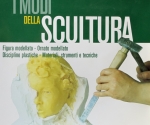Pino Di Gennaro was born in Troia, in the province of Foggia, on the 20th October 1951. He studied at Liceo Artistico di Brera (Art Lyceum of Brera) in Milan, and graduated in Sculpture at the Accademia delle Belle Arti di Brera (Fine Arts Academy of Brera, Milan), the school attended by Alik Cavaliere.
In this period Di Gennaro actively took part in the campaign for the didactic renewal of the school; with a group of friends he founded the B7 group, the Academy Collective.
In 1982 he co-founded the ‘Group Atelier’ together with Milanese artists Galbusera, Jannelli, Maino and Zanini. The group was a platform for debate and exchange on their works and poetics, that welcomed different figurative approaches and became a place for discussion on artistic production. With the exhibition ‘Atelier’, at Palazzo Dugnani, Milan, in December 1983, the Group had its first public outing. They are still exhibiting together up to this day, with major shows in cities like Milan, Turin, Madrid, Valencia, Barcelona, Wurzburg.
The Group also promoted a series of exhibitions called Venature, that each time involved artists of different evocative styles, to offer both from the point of views of content and language, a multidimensional overview of the Italian and European artistic activity.
From 1972 to 1985 Di Gennaro attended the studio of sculptor Arnaldo Pomodoro, a fundamental experience for his artistic education; in the same years he was appointed his assistant for the set design of ‘Das Katchen Von Heilbronn’ by H. Von Kleist (Zurich, 1972), directed by L. Ronconi; ‘Semiramide’ by G. Rossini (Rome, 1993), directed R. Guicciardini; ‘Orestea-Agamennuni’ by E. Isgrò and ‘Ruderi di Gibellina (1993), both directed by F. Crivelli; ‘Alceste’ by C.W. Gluck (Genova, 1987), directed by V. Puecher. From 1976 to 1999 he lectured on Mould-making and Plastic Arts at the Istituto Statale d’Arte (Public Art School), Monza and the Liceo Artistico Brera (Brera Art Lyceum), Milan.
He currently works as a professor at the Accademia di Belle Arti di Brera, in Milan.His intense activity as a sculpture teacher and researcher led to the completion of a widely acclaimed school text, ‘I Modi della Scultura‘ (Types of sculpture), published by Hoepli. The sculpture of Pino Di Gennaro embraces the methodology of ‘adding up’ rather than ‘taking out’. His works convey the knowledgeable outcomes of moulding soft materials such as clay, plasticine, papier-mâché, and, only recently, wax.In enhancing the expressive power of each single element, the sculptor combines poor materials to more refined ones: papier-mâché and steel, wax and bronze, papier-mâché and lead. Di Gennaro prefers bronze for outdoor works, adopting the lost-wax casting technique in its numerous expressive possibilities; it enhances the colour of the material if treated with acids or pigments, whilst mirror polishing exalts its preciousness and brightness.
The hand is not only an instrument, but also a potentially expressive tool: the hand that sees, shaping shapeless material, the hand as a second, peripheral brain, that learns, elaborates, establishes a connection with the material, as if it was a bodily encounter, allowing the enhancement of the expressive possibilities of the hand onto the material, leading to an inevitable erotic game.
In Di Gennaro’s work the colour of papier-mâché, the brightness of bronze, the transparency of wax and the opacity of lead are not seen as the qualities of individual materials, but rather as the expressive opportunity of triggering a fascinating conversation between soft and hard materials, poor and rich ones, classic and popular elements.
The evocative style of the sculptor is aimed at the social role of sculpture in the urban fabric, ast an opportunity to enhance the aesthetic quality of places, the identity and quality of life of people, adding value to the relationship between sculpture and architecture, in order to propose opportunities for interaction between the space, the artwork and its users. These ideas are exemplified by the Monumento alla Pace (Monument to Peace), made for the council of Troia and installed in Piazza San Secondino. The three large fountain-sculptures, in bronze, are conceived as an installation to revive the whole square.
In recent years Di Gennaro’s activity was enriched by a new experience: art as social care; he experiments and uses clay as a medium to ‘cure’ young teens who were victims of bullyism, an activity he undertook at the laboratory of the Fatebenefratelli Hospital in Milan.
In 2011, he completed the book ‘Manuale di Scultura‘ (Sculpture Manual), published by Hoepli.
